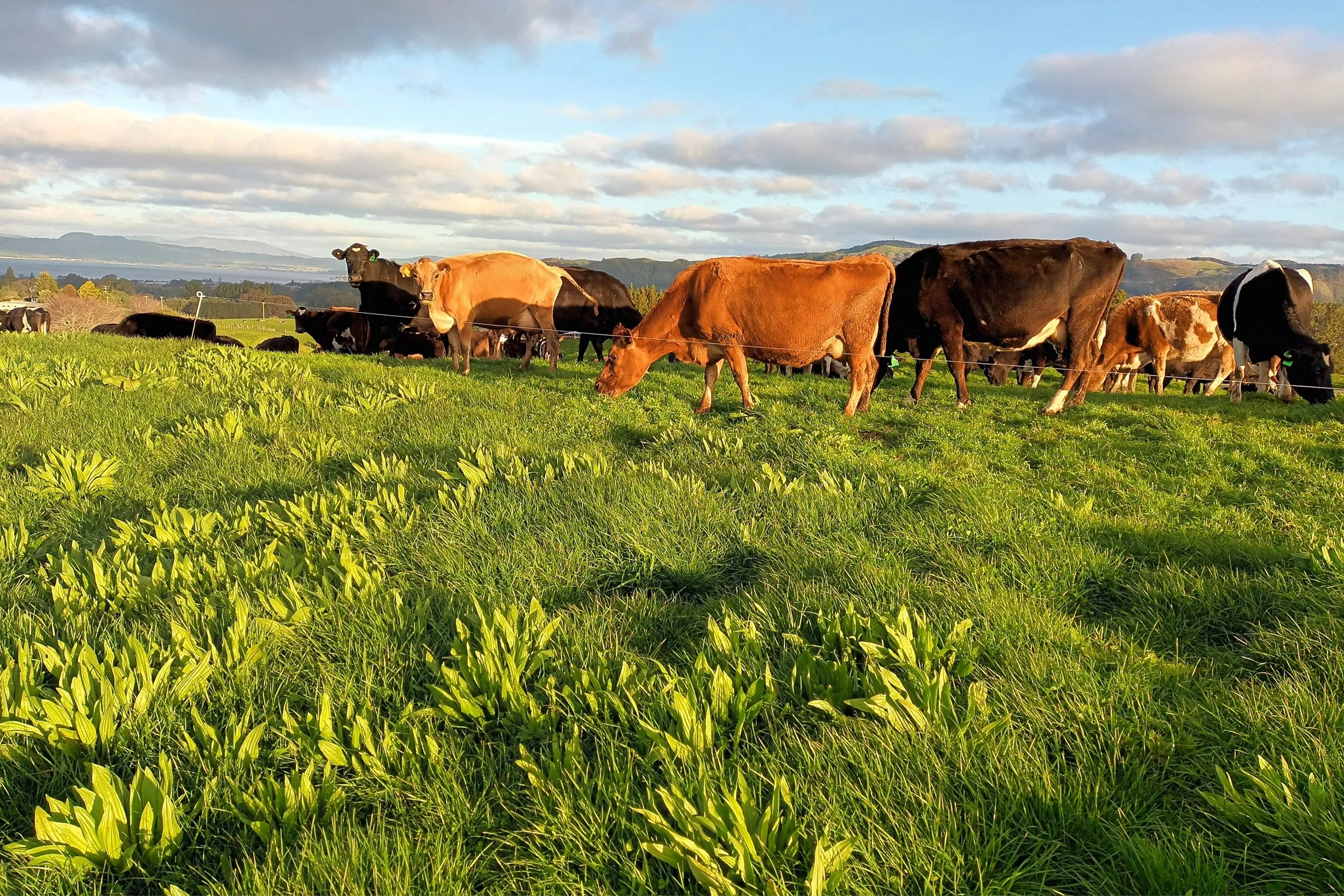Latest plantain trial results again show role in reducing nitrogen leaching
DairyNZ’s Plantain programme continues to deliver promising results, with new data confirming that modest levels of plantain in pastures reduce nitrogen leaching, offering farmers a practical science-backed tool to meet environmental goals.
With three years now complete, preliminary findings from the Lincoln University farmlet trial show 26% reduction in nitrate (N) leaching with an average of 17% Ecotain plantain in the pasture. Results from the Massey farmlet trial show over four years, N leaching was reduced on average by 26% where Ecotain plantain made up an average 25% in the pasture.
Monitoring on four mid-Canterbury farms shows that an average of 10-15% plantain across the whole farm is achievable by including plantain as part of the seed mix at pasture renewal and by broadcasting seed across the whole farm with fertiliser. The highest levels (20-40% plantain) are achieved in new swards 1-2 years after establishment.
The programme continues to show that plantain is a low-cost option to achieve significant reductions in N leaching without impacting the farm system, explains Kate Fransen, DairyNZ’s Plantain Programme Lead:
“Nitrogen leaching is an issue for many dairy catchments, so we need practical affordable solutions. Including plantain in your pasture is ‘low-hanging fruit’ for reducing N leaching – and we now know you don’t need to have 30% plantain in your pasture to have the positive effect.”
“Research shows that 17% plantain across the farm is enough to make a sizeable difference to N leaching and that between 10 and 20% plantain across the farm is achievable and practical for many farmers,” she said.
The final year of data collection is underway at the Lincoln site, while at Massey data collection is complete and final analysis is underway. The programme now turns its focus to adoption of plantain in targeted N sensitive catchments.
Regional success stories emerging
Farmers across New Zealand are adapting the science to suit their systems:
• Rotorua, Bay of Plenty: Farmers are achieving up to 20% plantain through broadcasting seed with their annual fertiliser and 17 of the 26 dairy farmers in the Rotorua Lake Catchment intend to use plantain to meet their BOPRC regulated 2032 nutrient targets. Modelling estimates that farmers required to meet 2032 N leaching reduction targets will have 5-7% higher profit if using plantain compared to those using alternative strategies.
• Southland: Farmers are maintaining 8-10% plantain across their farms by including plantain in their re-grassing mix and have begun trialling broadcasting seed with fertiliser into existing pastures to push levels higher. Modelling estimates that farmers will have 7% and 9% higher profit/ha with 10% and 20% plantain respectively, relative to farmers reaching the same N leaching reduction via alternative strategies.
• Mid-Canterbury: Partner farmers are demonstrating success with plantain in mixed swards, achieving 10-15% across the farm.
Overseer estimates that every 1% of plantain in pasture reduces nitrogen leaching by about 0.6% by reducing N in the urine patch. Research has also suggested that plantain can further cut leaching through soil processes. It’s encouraging that measured leaching reductions at Lincoln and Massey are greater than the modelled estimates, highlighting the potential benefit when both urine and soil processes are accounted for.
At the programme’s mid-term review, one of the key recommendations was to better understand these soil processes so the full benefits of plantain can be built into Overseer. This will be a major focus for the Plantain programme over the next three years.
Plantain is recognised as an N leaching mitigation option by regional councils in Canterbury, Horizons, Waikato, Southland and Bay of Plenty where N leaching limits are in place.
The cultivar Agritonic marketed by Agricom as Ecotain, has been used in Plantain programme trials. An evaluation system is currently under development which will enable the efficacy of other plantain cultivars to be determined and may be extended to other species in the longer term.
The Plantain Potency Programme is a seven-year research initiative led by DairyNZ and using Agricom’s Ecotain environmental plantain. The funding partners are MPI, DairyNZ, PGG Wrightson Seeds Ltd., and Fonterra.

